
Honda HR-V 4x4 (2015-2020) review
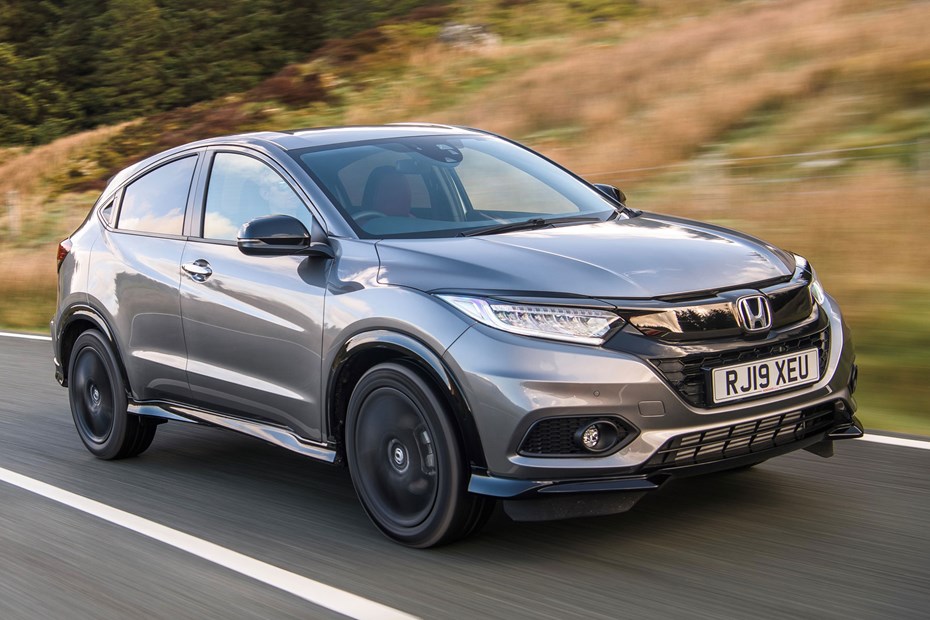
At a glance
| Price new | £19,390 - £29,185 |
|---|---|
| Used prices | £4,063 - £18,260 |
| Road tax cost | £20 - £195 |
| Insurance group | 18 - 27 |
Get an insurance quote with

|
|
| Fuel economy | 39.2 - 56.5 mpg |
| Range | 484 - 770 miles |
| Miles per pound | 5.7 - 7.2 |
| Number of doors | 5 |
| View full specs for a specific version | |
Available fuel types
Petrol
Diesel
Pros & cons
- Spacious interior
- Interesting styling
- Impressive diesel
- Overall practicality
- Lacklustre petrol engine
- Unsettled ride on larger wheels
Honda HR-V (15-20) rivals
Overview
When a manufacturer resurrects a name from its back catalogue, it’s usually because there’s a wealth of brand equity to be tapped into, but the Honda HR-V name is not one many will remember, despite only being away for 10 years.
Launched back in 1999, the first HR-V was a high-riding range of small three- and five-door SUVs, some of which were available with four-wheel drive.
This new Honda HR-V occupies a similar area of the market but with an altogether different proposition. You may refer to it as a crossover as it combines chunkier SUV styling elements, with a coupe-like roofline and interior flexibility similar to an MPV.
Competitor-wise it’s trickier to pigeonhole the HR-V: exterior dimensions place it neatly between the polarising Nissan Juke and its big-selling larger stablemate, the Nissan Qashqai. Despite this the Honda offers more passenger and luggage space than both, as well as the quirky Citroen C4 Cactus; it even gets close to matching the physically larger-still Renault Kadjar.
What the firm’s smallest SUV offers
There’s little doubt that crossovers are proving to be big business for car manufacturers, many vying for attention with distinctive styling. It’s a trick the Honda HR-V pulls off well, managing to look fresh and different without being particularly divisive.
Reinforcing the coupe-aping roofline are rear door handles hidden in the trailing edge of the window line, not unlike the solution found on the Toyota C-HR or Nissan Juke.
Despite its rugged looks, there are no plans to bring four-wheel drive-equipped versions to Britain despite the system’s availability in other markets.

Climb aboard and you’ll be presented with one of Honda’s more cohesive cabin designs, with instruments and controls logically grouped in a manner less haphazard than before. There’s a greater amount of soft-touch plastics employed in the dash’s construction and the centre console is mounted high, to further reinforce this snug, coupe-like notion.
Practicality hasn’t been cast aside, though, with Honda’s famous ‘Magic’ rear seats making an appearance – the cushions flip upwards to liberate otherwise unutilised space. With all five seats in place there’s 470 litres of regular boot space, just two litres shy of the Kadjar’s offering.
Petrol and diesel engines
Mechanical offerings for the Honda HR-V are restricted to just three different engine and transmission combinations.
Most UK-specification HR-Vs are expected to be ordered with Honda’s well-regarded 1.6-litre i-DTEC diesel, solely available with a slick six-speed manual gearbox. It’s the least powerful of the three motors at 120hp, but 300Nm of torque ensures it performs better than the petrol alternative.
Under the petrol-powered Honda HR-V’s bonnet is a 1.5-litre i-VTEC motor, delivering 130hp and 155Nm of torque to the front wheels.
It lacks the diesel’s lustre, feeling lethargic as you attempt overtaking manoeuvres, requiring a couple of gears to be dropped to bring the engine revs up.
A turbocharged version of this 1.5-litre petrol engine was a late addition to the range, coming along in 2019 in its own ‘Sport’ trim. The boost in performance available over the entry-level petrol engine makes for a far more cohesive package overall,
The petrols can also be ordered with a CVT automatic transmission which mimics the change action of a conventional seven-speed auto.
Although a hybrid version of the HR-V is available in Japan, there are no plans for that powertrain to reach British showrooms.



.jpg)
.jpg)
.jpg)
.jpg)
.jpg)
.jpg)
.jpg)
.jpg)
.jpg)
.jpg)
.jpg)
.jpg)
.jpg)
.jpg)
.jpg)
.jpg)
.jpg)
.jpg)
.jpg)


.jpg)
.jpg)
.jpg)
.jpg)
.jpg)
.jpg)
.jpg)
.jpg)
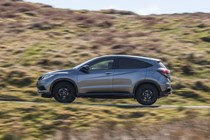
.jpg)

.jpg)
.jpg)
.jpg)
.jpg)
.jpg)
.jpg)
.jpg)
.jpg)
.jpg)
.jpg)
.jpg)
.jpg)
.jpg)
.jpg)
.jpg)
.jpg)
.jpg)

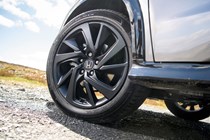
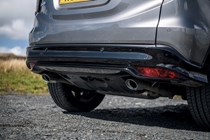

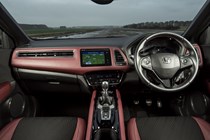

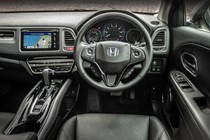
.jpg)
.jpg)
.jpg)
.jpg)
.jpg)
.jpg)
.jpg)
.jpg)
.jpg)
.jpg)
.jpg)
.jpg)
.jpg)
.jpg)
.jpg)
.jpg)
.jpg)
.jpg)
.jpg)
.jpg)
.jpg)
.jpg)
.jpg)
.jpg)
.jpg)
.jpg)
.jpg)
.jpg)
.jpg)
.jpg)
.jpg)
.jpg)
.jpg)
.jpg)
.jpg)
.jpg)
.jpg)
.jpg)

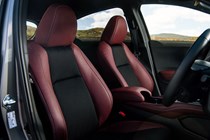
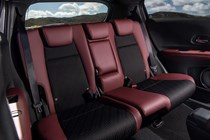


.jpg)
.jpg)
.jpg)
.jpg)
.jpg)
.jpg)
.jpg)
.jpg)
.jpg)
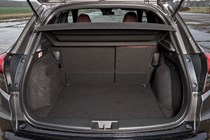
.jpg)
.jpg)
.jpg)
.jpg)
.jpg)
.jpg)
.jpg)
.jpg)
.jpg)
.jpg)

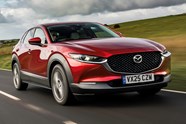
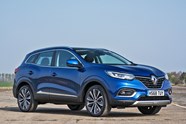

.jpg?quality=50)
.jpg?quality=50)
.jpg?quality=50)
.jpg?quality=50)
.jpg?quality=50)
.jpg?quality=50)
.jpg?quality=50)
.jpg?quality=50)
.jpg?quality=50)
.jpg?quality=50)
.jpg?quality=50)
.jpg?quality=50)
.jpg?quality=50)
.jpg?quality=50)
.jpg?quality=50)
.jpg?quality=50)
.jpg?quality=50)
.jpg?quality=50)
.jpg?quality=50)


.jpg?quality=50)
.jpg?quality=50)
.jpg?quality=50)
.jpg?quality=50)
.jpg?quality=50)
.jpg?quality=50)
.jpg?quality=50)
.jpg?quality=50)

.jpg?quality=50)

.jpg?quality=50)
.jpg?quality=50)
.jpg?quality=50)
.jpg?quality=50)
.jpg?quality=50)
.jpg?quality=50)
.jpg?quality=50)
.jpg?quality=50)
.jpg?quality=50)
.jpg?quality=50)
.jpg?quality=50)
.jpg?quality=50)
.jpg?quality=50)
.jpg?quality=50)
.jpg?quality=50)
.jpg?quality=50)
.jpg?quality=50)







.jpg?quality=50)
.jpg?quality=50)
.jpg?quality=50)
.jpg?quality=50)
.jpg?quality=50)
.jpg?quality=50)
.jpg?quality=50)
.jpg?quality=50)
.jpg?quality=50)
.jpg?quality=50)
.jpg?quality=50)
.jpg?quality=50)
.jpg?quality=50)
.jpg?quality=50)
.jpg?quality=50)
.jpg?quality=50)
.jpg?quality=50)
.jpg?quality=50)
.jpg?quality=50)
.jpg?quality=50)
.jpg?quality=50)
.jpg?quality=50)
.jpg?quality=50)
.jpg?quality=50)
.jpg?quality=50)
.jpg?quality=50)
.jpg?quality=50)
.jpg?quality=50)
.jpg?quality=50)
.jpg?quality=50)
.jpg?quality=50)
.jpg?quality=50)
.jpg?quality=50)
.jpg?quality=50)
.jpg?quality=50)
.jpg?quality=50)
.jpg?quality=50)
.jpg?quality=50)





.jpg?quality=50)
.jpg?quality=50)
.jpg?quality=50)
.jpg?quality=50)
.jpg?quality=50)
.jpg?quality=50)
.jpg?quality=50)
.jpg?quality=50)
.jpg?quality=50)

.jpg?quality=50)
.jpg?quality=50)
.jpg?quality=50)
.jpg?quality=50)
.jpg?quality=50)
.jpg?quality=50)
.jpg?quality=50)
.jpg?quality=50)
.jpg?quality=50)
.jpg?quality=50)